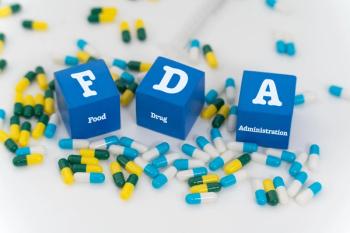
Disposable pill-counting device eliminates contamination
A pharmacy technician from Seattle has created a disposable, single-use tray and spatula to eliminate the risk of cross-contamination during pill counting in pharmacies.
"The process is repeated again and again, with pharmacists using the same tray and spatula," said Ming Koh, 58, a former design engineer for Motorola. "For most drugs there is no attempt to prevent possible contamination of the next patient's medication by the medication of the previous patient," he said. "But some patients may be allergic to some medications, and now it is possible for that patient's medication to become contaminated with previous counted drugs. My devices can be used once and discarded."
Hospitals are especially aware of these risks, said Luci Power, R.Ph., senior pharmacist and manager for parenteral support services at the University of California, San Francisco, Medical Center. She is an expert on hazardous drug and contamination in pharmacy settings. Her hospital's pharmacies take specific steps to avoid drug contamination. Penicillin-counting trays are kept in a separate bag and cleaned after each use. Chemo drugs also have differentiated trays and are cleaned with bleach.
Other counting trays and spatulas are wiped down after each use, said Power. She said she hopes that is common practice in community pharmacies as well. Whether contamination problems are, in fact, happening in community pharmacies is an open question, she said. "Anyone who opens a pill bottle can see the residue at the bottom. But how big a health problem this poses, we don't really know."
However, Power does not necessarily endorse Koh's device-"I don't want to have to deal with more disposables," she explained. "It's already a big part of the cost of doing business." Still, she can see a potential need: "Many [community and hospital] pharmacies are moving toward the use of counting machines, but many aren't. This [disposable tray] may be of some value," she said.
Michael Cohen, president of the Institute for Safe Medication Practices, agreed. "It seems entirely possible that residual dust and other particles from tablets in the counting tray could contaminate the next batch of tablets counted," he said. "I must say that I have never heard of an actual case in which a patient was harmed as a result. But, theoretically, it could happen. In fact, perhaps it has happened but has not been recognized as the actual cause."
Koh described his invention as simple to make, cost-effective, and more versatile in operation than existing pill-counting trays and spatulas. His trays can be produced for pennies a piece, as plastic throwaways.
The best immediate market would be community pharmacies, said Koh. To that end he has contacted a San Francisco marketing company and has been in touch with a large retailer. That company's director of pharmacy operations has expressed interest in meeting with him.
The manufacturing and marketing of Koh's invention could be problematic, however, said Wayne M. Caverly, president of the Efficient Pharmacy Institute, a consulting company. He retired from McKesson Automated Prescription Systems and is an expert on pharmacy design.
Newsletter
Pharmacy practice is always changing. Stay ahead of the curve with the Drug Topics newsletter and get the latest drug information, industry trends, and patient care tips.











































































































































































































